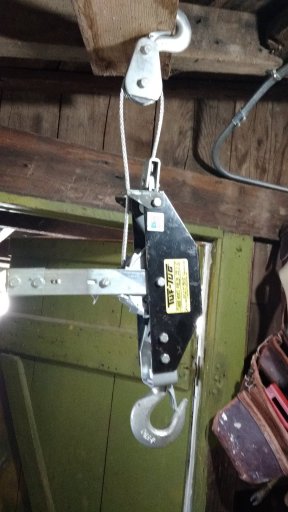
Traveler III
Hello all,
I've had an idea rolling around in my head, and I'd like to get some opinions from the OB community.
As many of you may know, I do all my adventures on a shoestring budget. I am the sole breadwinner for a family with 5 kids living in one of, if not the most expensive parts of Canada, so there isn't much cash left over for upgrades and new gear.
Ideally, I'd like to design and build (with the help of my welder brother in law) a custom winch bumper for the CR-V. This would entail a LOT of time, effort, and money, all of which are in short supply for me. It would require me to rip out all the pre-intake resonators on my air system, which would get to the point where I might as well install a snorkel too-more time and money-and I would have to relocate the washer fluid reservoir. There might be some cost for materials as well, although that's heavily discounted.
Given that I REALLY need a lift and to replace my 20 year old OEM coilovers, that would push any winch bumper back further.
What do you guys think of using a come along as a low cost alternative to a winch? I think I could get one used for around $40-60, plus I guess I would need some line to use with it as well, and perhaps a snatch block. Given how expensive winches are, I still think a come-along setup would be a fraction of the cost. Also, because my rig is so light weight, I feel like a come-along would be a bit more bang for buck than it would be with a really heavy rig.
What do you guys think?
I've had an idea rolling around in my head, and I'd like to get some opinions from the OB community.
As many of you may know, I do all my adventures on a shoestring budget. I am the sole breadwinner for a family with 5 kids living in one of, if not the most expensive parts of Canada, so there isn't much cash left over for upgrades and new gear.
Ideally, I'd like to design and build (with the help of my welder brother in law) a custom winch bumper for the CR-V. This would entail a LOT of time, effort, and money, all of which are in short supply for me. It would require me to rip out all the pre-intake resonators on my air system, which would get to the point where I might as well install a snorkel too-more time and money-and I would have to relocate the washer fluid reservoir. There might be some cost for materials as well, although that's heavily discounted.
Given that I REALLY need a lift and to replace my 20 year old OEM coilovers, that would push any winch bumper back further.
What do you guys think of using a come along as a low cost alternative to a winch? I think I could get one used for around $40-60, plus I guess I would need some line to use with it as well, and perhaps a snatch block. Given how expensive winches are, I still think a come-along setup would be a fraction of the cost. Also, because my rig is so light weight, I feel like a come-along would be a bit more bang for buck than it would be with a really heavy rig.
What do you guys think?







